An excerpt from the Annual Report of the Commissioner of Indian Affairs to the Secretary of the Interior for the fiscal year ending 1878, containing reports on the Indians at the Hampton Institute and a report by Lieut. Richard Henry Pratt regarding the recruitment of students for that school. Both reports discuss the education of students at…
Prisoners from Ft. Marion (1875-1878)
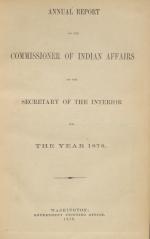

The first page opened with an article titled "THE INDIAN TRAINING SCHOOL," that described the progress of the school, its Christian methods, the work of the former Ft. Marion prisoners of war preparing buildings for use, the importance of the town Sunday Schools, the school curriculum that emphasized farmwork for boys and housekeeping for girls…

Page one opened with a teacher identified as A.J.S. (Alfred J. Standing) reminiscing about his time teaching Native Americans before he came to Carlisle. Also on the page was an article signed by "G. Le R. B." (George Le Roy Brown) on the civilization of the Indians, comparing it to the conquests of the Roman Empire and its assimilation of less…
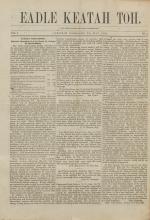
Page one opened with information, including statistics, from the Annual Report of the Commissioner of Indian Affairs about Carlisle and other schools as reported by Indian agents. Page two contains more arguments for, and accounts of support for, educating Indian youth. The article "Our Dining Hall" describes the physical space, the work the…
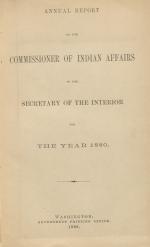
An excerpt from the Annual Report of the Commissioner of Indian Affairs to the Secretary of Indian Affairs for the fiscal year ending 1880, containing the first annual report of the Carlisle Indian School. The report discusses the school's opening, recruitment of students, educational and industrial curricula, and overall health. Also included…
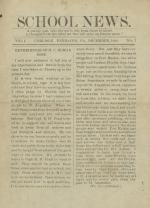
Issue Seven opens with Roman Nose explaining how he came to Carlisle after being held captive in St. Augustine for three years. He explains his time there was good because of the kindness of Capt. Pratt. After the editorial about the benefits of speaking English, there was a small letter from a Sioux boy named Phillip, to show how “large boys…

Issue Eight opens with a continuation of Henry C. Roman Nose’s journey from St. Augustine, to New York city and eventually Tarrytown, New York. The next page was an editorial on the importance of Hard Work, and how Indians should strive to work hard like White men do, along with a series of little blips about the school, including the arrival…
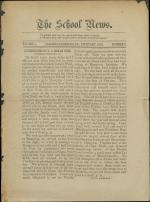
Issue nine, continues Roman Nose’s story, showing him attending Hampton School and eventually traveling to Lee, Ma. This issue’s editorial featured a piece on the hopes that the new U.S. President Garfield will put all Indian children in school. On the same page Robert W. Stewart (Creek) wrote about George Washington’s birthday. A bit about…
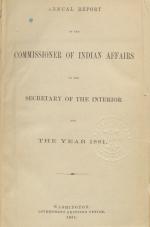
An excerpt from the Annual Report of the Commissioner of Indian Affairs to the Secretary of the Interior for the fiscal year ending 1881, containing the second annual report of the Carlisle Indian School. The lengthy report includes discussions of curriculum, student recruitment, the school's campus, the success of the sending students on…
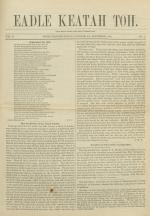
Page one opened with a poem by E.G.P. and the story of the Great Turtle, which was based on the arrival of a Spanish Ship. There was also a piece on the trouble that Billy Cornipachio faced, which included the opposition of his people to his education. Page two had a piece about visiting chiefs and on three former prisoners from Fort Marion in…

Page one opens with a discussion on the various types of Indian education, from day and boarding schools in Indian Territory to Boarding schools like Carlisle in the east. It also talked about the construction of new buildings on campus. Page two had more statistics on other Indian Schools. Page three had a letter from George (Kit-Ka-Hoc) La-Lu…
![Former Fort Marion prisoners at the Carlisle Indian School [version 1], c.1879 Former Fort Marion prisoners at the Carlisle Indian School [version 1], c.1879](/sites/default/files/styles/views_taxonomy/public/image-photo/Potamkin%20%2323%20%28Choate%20%2328%29%20Full%20040.jpg?itok=i8gRGEsS)
Portrait of White Bear, Zonkeuh, Koba, Henry Roman Nose, Little Chief, Charles Oheltoint, Etadleuh Doanmoe, and White Man posed on the grounds of the school.
![Fort Marion prisoners at the Carlisle Indian School [version 2], c.1879 Fort Marion prisoners at the Carlisle Indian School [version 2], c.1879](/sites/default/files/styles/views_taxonomy/public/image-photo/CIIS%20RG099s%20B1.4%20cropped.jpg?itok=IdQP8Dji)
Portrait of White Bear, Zonkeuh, Koba, Henry Roman Nose, Little Chief, Charles Oheltoint, Etadleuh Doanmoe, and White Man posed on the grounds of the school.
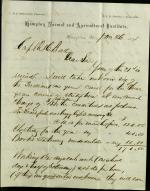
Samuel Chapman Armstrong writes to Richard Henry Pratt discussing the costs and terms for six Indian students under Pratt's care at the Hampton Normal and Agricultural Institute, including fees, working wages, and hours. Armstrong also discusses the challenges of running Hampton, and asks whether the potential students could be brought from…
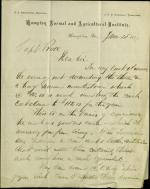
Samuel Chapman Armstrong notifies Richard Henry Pratt of a calculating error in a previous letter about student fees at Hampton. Armstrong also asks whether Pratt himself can come with his students to Hampton.
Note: This letter is misdated 1877, but it is actually from 1878, referencing a previous letter. See the letter "…

Samuel Chapman Armstrong writes to Richard Henry Pratt informing Pratt of a letter written by Bishop H. B. Whipple and forwarded to Armstrong by Elizabeth Farmer. Armstrong asks Pratt to write to Bishop Whipple for support and to invite him to visit Hampton.

Samuel Chapman Armstrong writes to Richard Henry Pratt confirming plans for the arrival of ten of Pratt's students under the care of Mr. Caruthers, and discusses scholarships for those students.
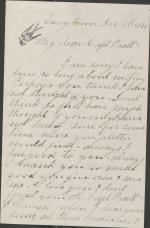
Paul Tsait-Kopeta writes to Richard Henry Pratt providing him with life updates.
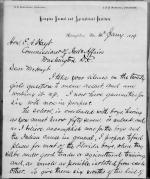
Richard H. Pratt states that he currently has 57 male students at Hampton and is looking to recruit 20 female students. He goes on to say that he plans to send most of the former Ft. Marion prisoners currently enrolled at Hamtpon on outings, believing that placing Indian students in white families where they will learn a trade will help give…
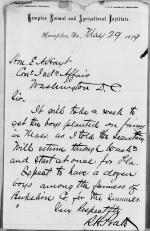
Richard H. Pratt informs Commissioner of Indian Affairs E. A. Hayt that it will take a week to place the male students from Hampton on farms in Massachusetts and then he will travel to Florida. Pratt expects to place a dozen male students on farms in Berkshire County as well.
Note: This item was copied from U.S. National Archives…
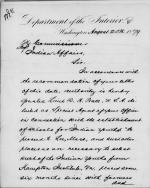
Acting Secretary of the Interior A. Bell informs the Commissioner of Indian Affairs that he is giving permission to Lieutenant Richard Henry Pratt to proceed to Lee, Massachusetts. Bell notes that Pratt will secure current Hampton Institute students who are on outing and take them to the Carlisle Barracks. These Hampton students will become…
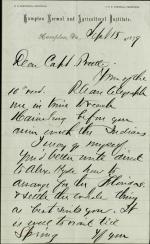
Samuel Chapman Armstrong of the Hampton Institute writes to Richard Henry Pratt discussing arrangements for Indians coming to either Hampton or Carlisle, as well as arrangements to transfer the Florida prisoners north. He also notes that Pratt can turn to the American Missionary Association for funding.
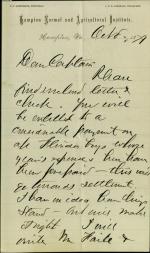
Samuel Chapman Armstrong of the Hampton Institute writes to Richard Henry Pratt about payment for expenses for prisoners from Ft. Marion.
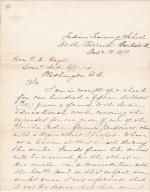
Richard Henry Pratt writes to Commissioner of Indian Affairs Ezra Hayt for instructions on how to process donations received for the Carlisle Indian School. Pratt notes that he received a donation for the continued education of a former prisoner-of-war held at Fort Marion in St. Augustine, Florida. He requests specific instructions on how or…

Samuel Chapman Armstrong of the Hampton Institute writes to Richard Henry Pratt discussing a recent conversation with Commissioner of Indian Affairs Ezra Hayt, and forwards a letter (on the reverse side of the page) to Armstrong from Thomas H. Fraile about Whiteman's placement at Carlisle.
